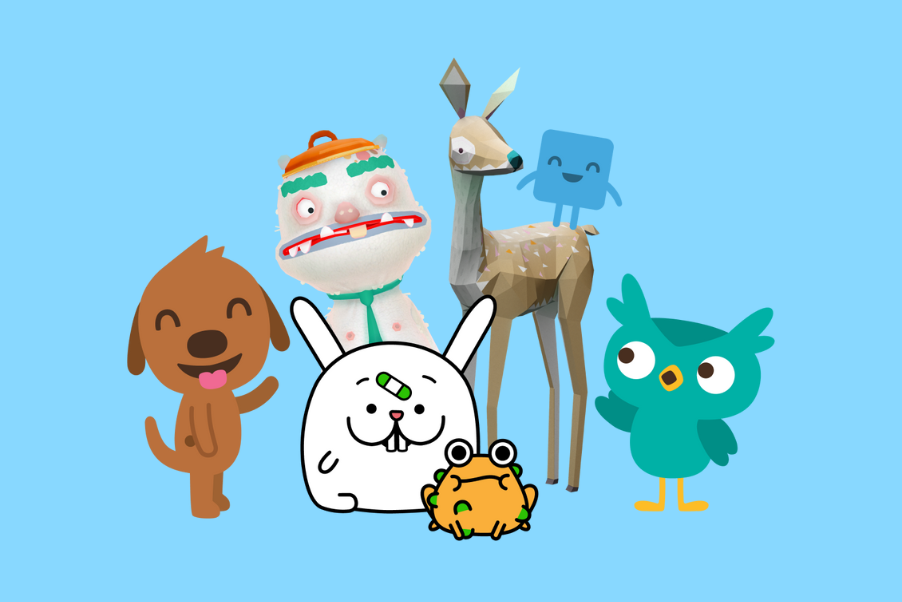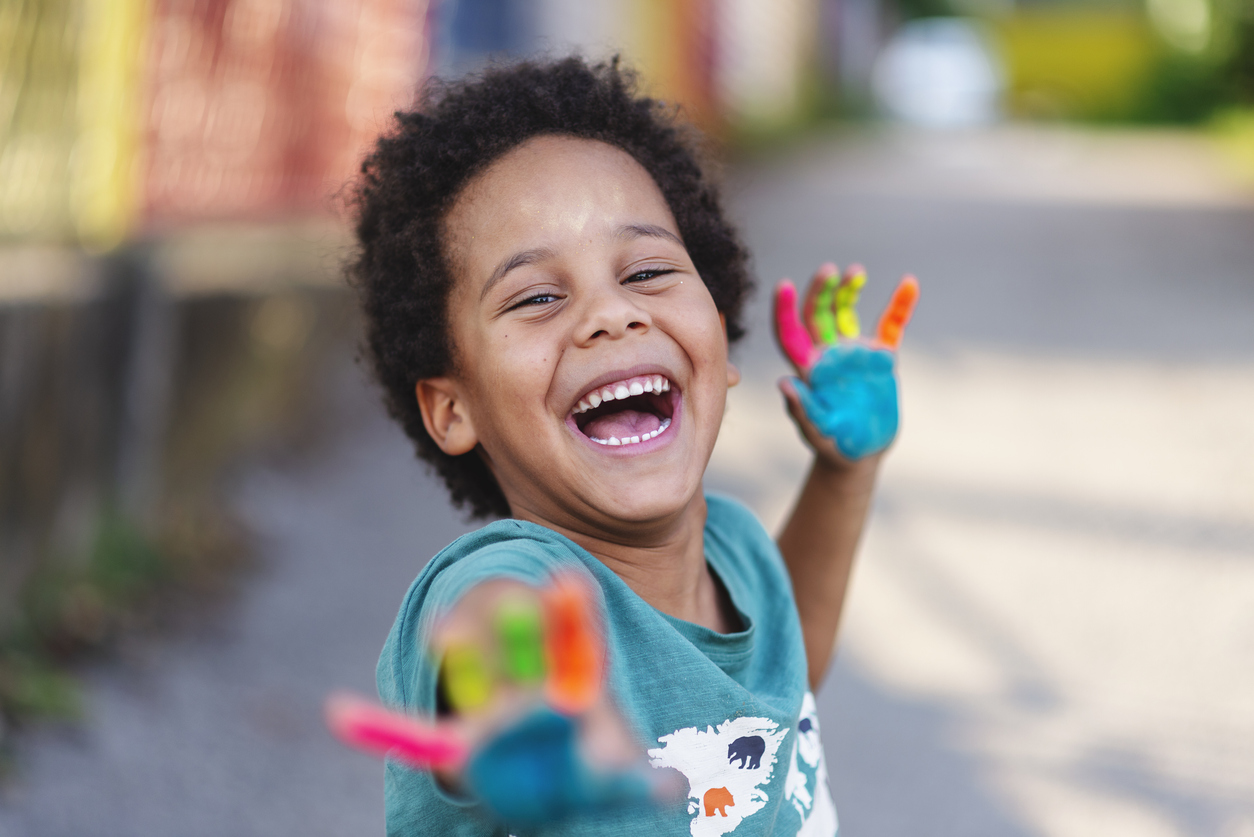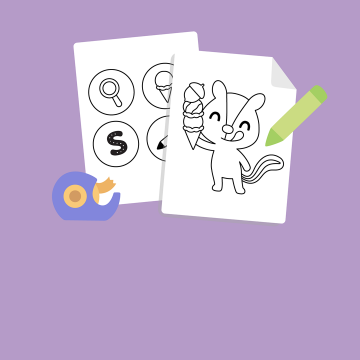- Language development in kids: Helping your child to combine words

The first words of a child are one of the most exciting milestones that parents and caregivers can experience. The American Academy of Pediatrics states that by 15 months of age, most kids will say their first words. However, there’s a lot that leads up to that magical moment...it’s the result of a long developmental process that started right from birth. Children first learn to recognize the rhythm of language before speech and language skills start to develop. Throughout their childhood and adolescence, this development continues.
When they’re babies, the adorable babbling, repeating sounds, or intently looking at your face when you speak all contribute to their language development. Studies have shown that no matter where they're from, all babies learn their native language in more or less the same order. This timeline is measured in milestones, but since all kids develop at their own pace, slight deviations from these language milestones are normal.
The first milestone for infants is learning to distinguish sounds, and there’s lots to learn! There are around 44 sounds that are used in the English language. These sounds are called phonemes, and they distinguish one word from another. When little ones first start to learn the language, they differentiate between the sounds and these phonemes. This is called phonemic awareness. Phonemic awareness is essential for creating the foundation that helps children learn to read in the future.
Next, the babbling begins! Although it seems like babies are making meaningless sounds, babbling actually is their first language. Through babbling, little ones learn to control how they vocalize and produce sounds. Later on, babbling develops the skill to produce early speech sounds. Toddlers can then repeat syllables or string together different syllables.
These are a couple of the critical milestones little ones reach before they speak their first words and learn to repeat what they’re hearing. Once they’re experimenting with their first words, children begin to develop their ability to combine words. Initially, kids combine two words together like “Mommy go.” As they grow, learn, and develop more skills, their combinations start to include verbs as well.
Telegraphic speech age
Once little ones start speaking, kids combine only a couple of words at first. This is called telegraphic speech, and these sentences generally consist of only two or three words. Kids usually don’t get the grammar correct in these telegraphic sentences, but they typically get the order of the words correct. For example, they may say “want go” if they’re ready to head home, or “Mommy eat” if they caught you trying to sneak in that donut when you didn’t think anyone was looking. (We’ve all been there!) Typically, children develop two-word sentences around 18-24 months. These simple sentences lay the groundwork for your little one to form grammatically correct sentences in the future.
Tips for parents to help kids combine words
When kids start to combine words and develop their language skills, it often comes with a lot of questions. What counts as a two-word combination? My child isn’t combining words yet, should I be concerned? These are all valid questions, and a normal response to your child learning a new milestone.
Once little ones build up their vocabulary of single words, they start to experiment with two-word combinations. Saying "thank you" isn't considered a two-word combination since it's an expression that's memorized. If a child can combine two words that they know such as “you up” or “thank dada," then they are considered combined words.
Kids learn and grow at different paces, so your child may not be ready for combining words at the same time as their peers. Here are some tips for parents and caregivers to help boost their little one’s ability to combine words and strengthen their language skills:
Monkey see, monkey do
Let’s face it...your kid’s first combinations are likely not going to be flawless in the grammar department. Try to lead by example by using correct grammar and encourage sentences. When they say “want mommy,” repeat their sentence with proper grammar, such as, “You want mommy.” This will help your child understand how the words are accurately used together. They’ll also learn the context of the word and its meaning.
Make sure their single word vocabulary is strong
Even after your kiddo starts using two-word combinations, don’t forget to continue working on single words. These will improve their language skills, and it’s easier to learn a first, then combine it with another one later on.
Let them take the lead
Kids start learning from the moment they are born. Just like other essential learning skills, the foundation of combining words is laid long before the skill is acquired. While practice makes perfect, it’s important to let your child take the lead. Try not to steer their attention away from what interests them, and follow their train of thought when they start experimenting with communication. Responding in a way that lets them know you understand them will help them make connections and build confidence. In turn, they’ll be motivated to communicate and interact more, resulting in more practice.
Emphasis is important
When a child is learning how to combine words, you can help them by emphasizing important words through your actions or tone of voice. Little ones respond to facial expressions, body language, and tone, so be sure to make time for positive face-to-face interactions! Your emphasis on important nouns or verbs will help them expand their vocabulary.
Patience and repetition
Developing a growing vocabulary is hard work, and your little one may struggle at first. But don’t worry...it’s normal for it to take some time for your child to get the hang of combining words. Plus, kids need to hear new words many times before they start to use them regularly. Try incorporating new words into their daily routines to help speed along the process, and use them frequently to help your little one remember.

Encourage your child with fun activities to practice sentences
Turn daily tasks into learning activities
You can encourage your child to combine words by turning a daily routine or a task into a learning activity. For example, during bathtime say, “wash + body part,” naming body parts along the way. This will build their vocabulary and give them a sense of how to combine two words together.
Take their interest into consideration
Kids love to talk about things they're interested in, and it's an excellent opportunity to expand their vocabulary. If your little one is passionate about trucks or crazy about cats, talk with them about their favorite things and they’ll be motivated to strengthen their communication. Give them the time and space to talk, and they’ll practice new words and sentences without even realizing it!
Turn mistakes into a positive learning opportunity
Making mistakes is essential to the learning process, but it can be discouraging for little ones. Instead of immediately pointing out their mistakes and correcting them, help them to expand on their words instead. Taking an encouraging approach and setting an example by using the correct grammar helps little ones learn without feeling that they’ve done something wrong. As a result, kids will feel confident speaking their minds without fear of making mistakes and will further grasp the meaning of words and how to phrase sentences.
Make a verb box
One of the best ways to practice vocabulary and building sentences is by turning it into a fun activity you can do together. Choose a verb to practice with your child, grab a cardboard box, and have your kiddo put in items from around the house that they think would match the verb. For instance, for the verb “wash,” your little one can put cutlery, a doll, a sock, or a cup into the box. When you put the item in, say “wash fork” or “wash clothes.”
Storytime!
There are lots of ways to practice combining words, but storytime is one of the best options for encouraging your little one to practice sentences. Reading your child’s favorite books will help them build vocabulary, understand concepts, and hear the correct way to use combined words.
Use outside playtime
During your next visit to the park, you can incorporate playground activities into your kid’s language development. When your child is playing, describe what they are doing in simple sentences, depending on your kid’s level of understanding. “X is under” or “Y is sliding” are simple sentences that improve your kid’s vocabulary and teach them how to use them in the proper context.
Kids are unique in their development. Their learning and developmental paces vary, so don’t worry if their development looks different from other kids. Keep talking, keep playing, keep reading, and your little one will be a chatterbox before you know it!


